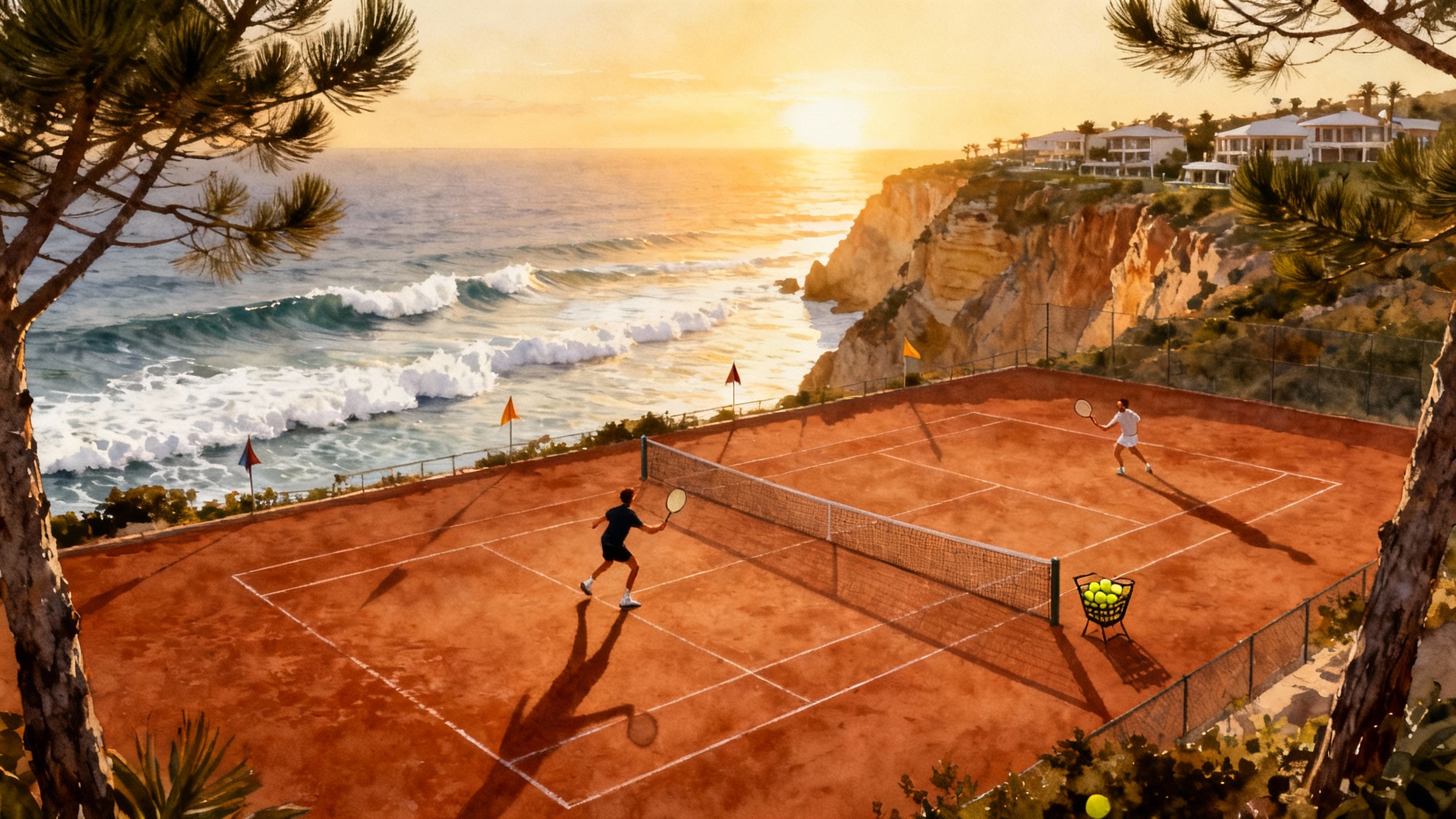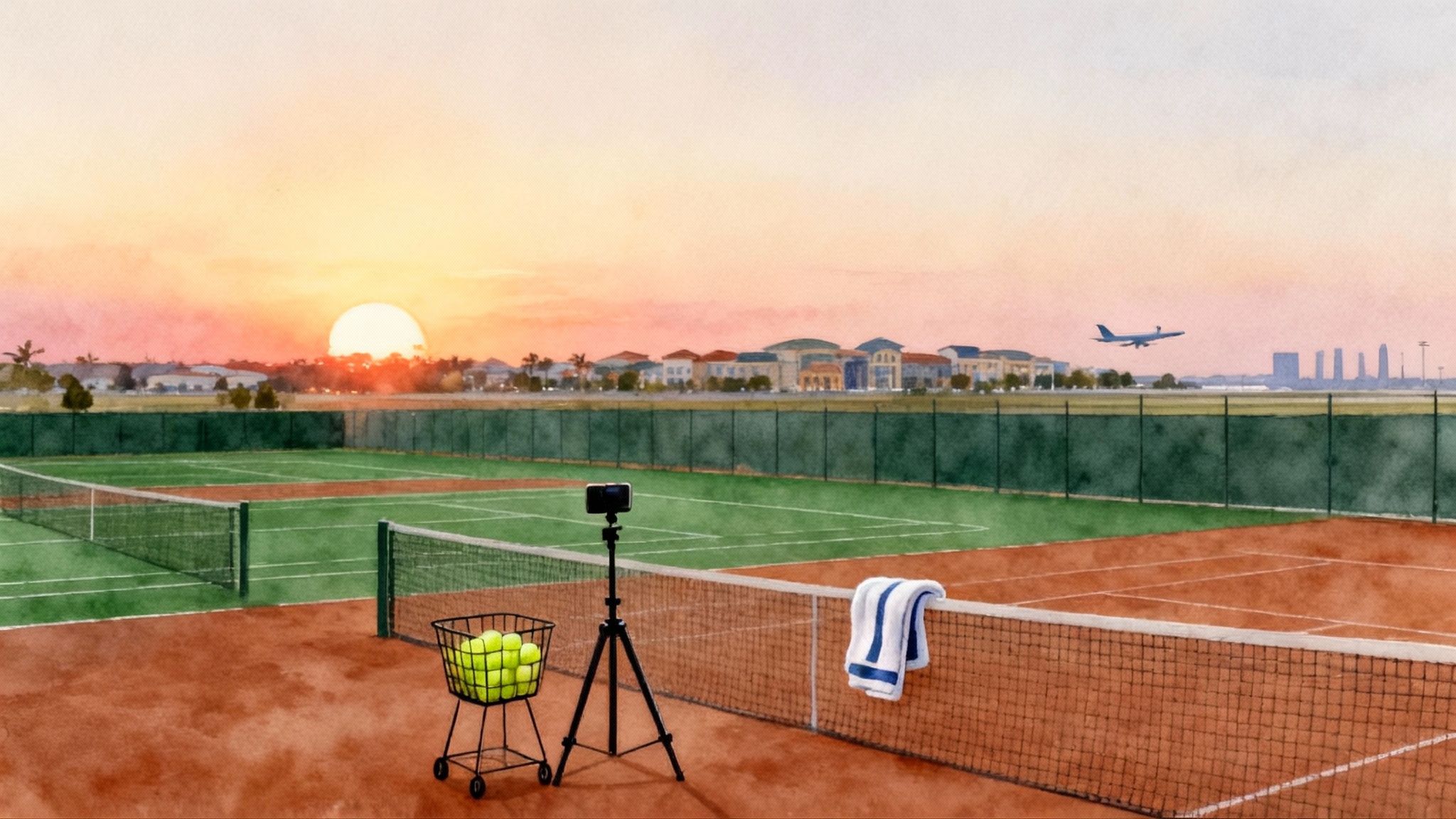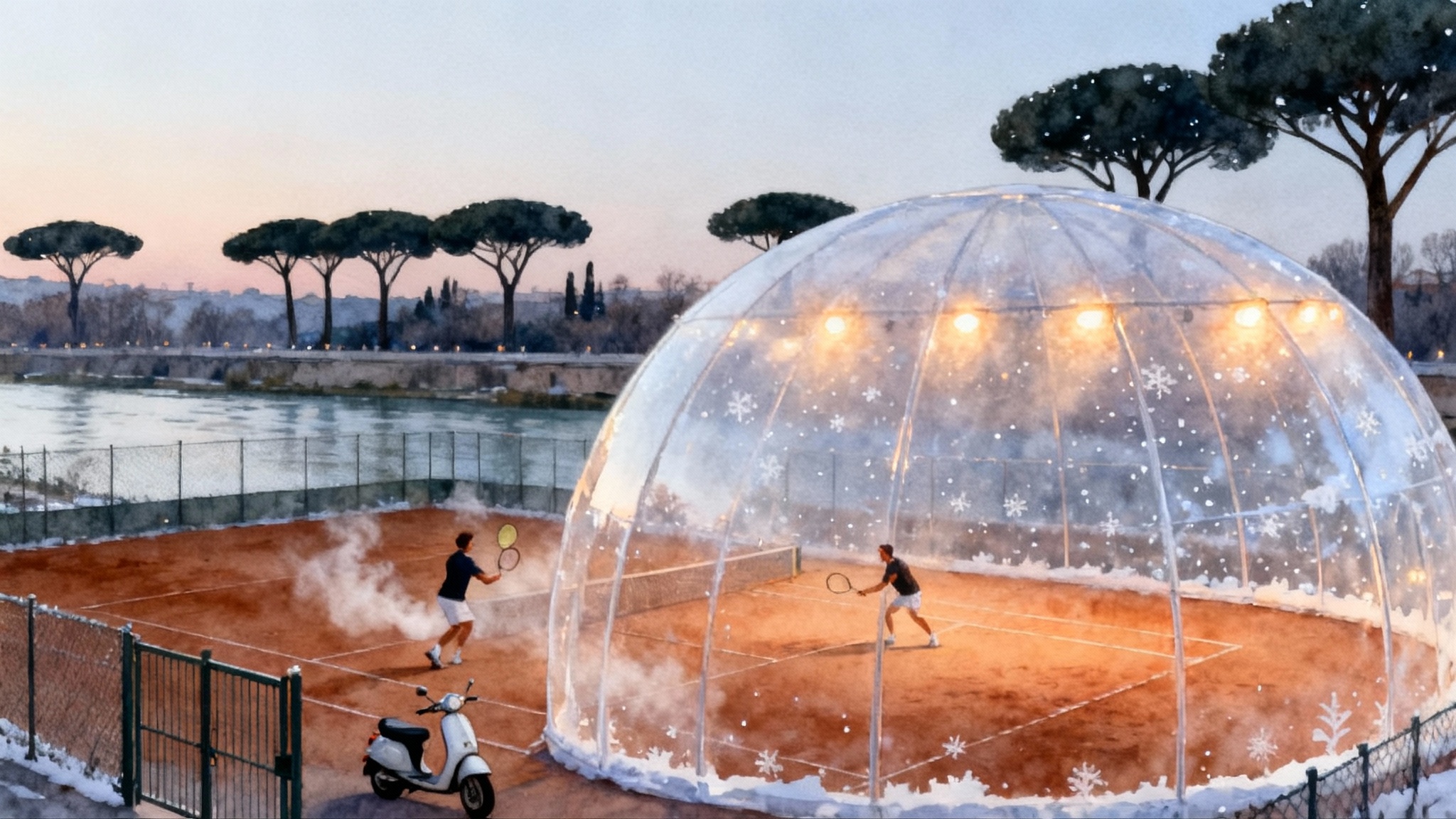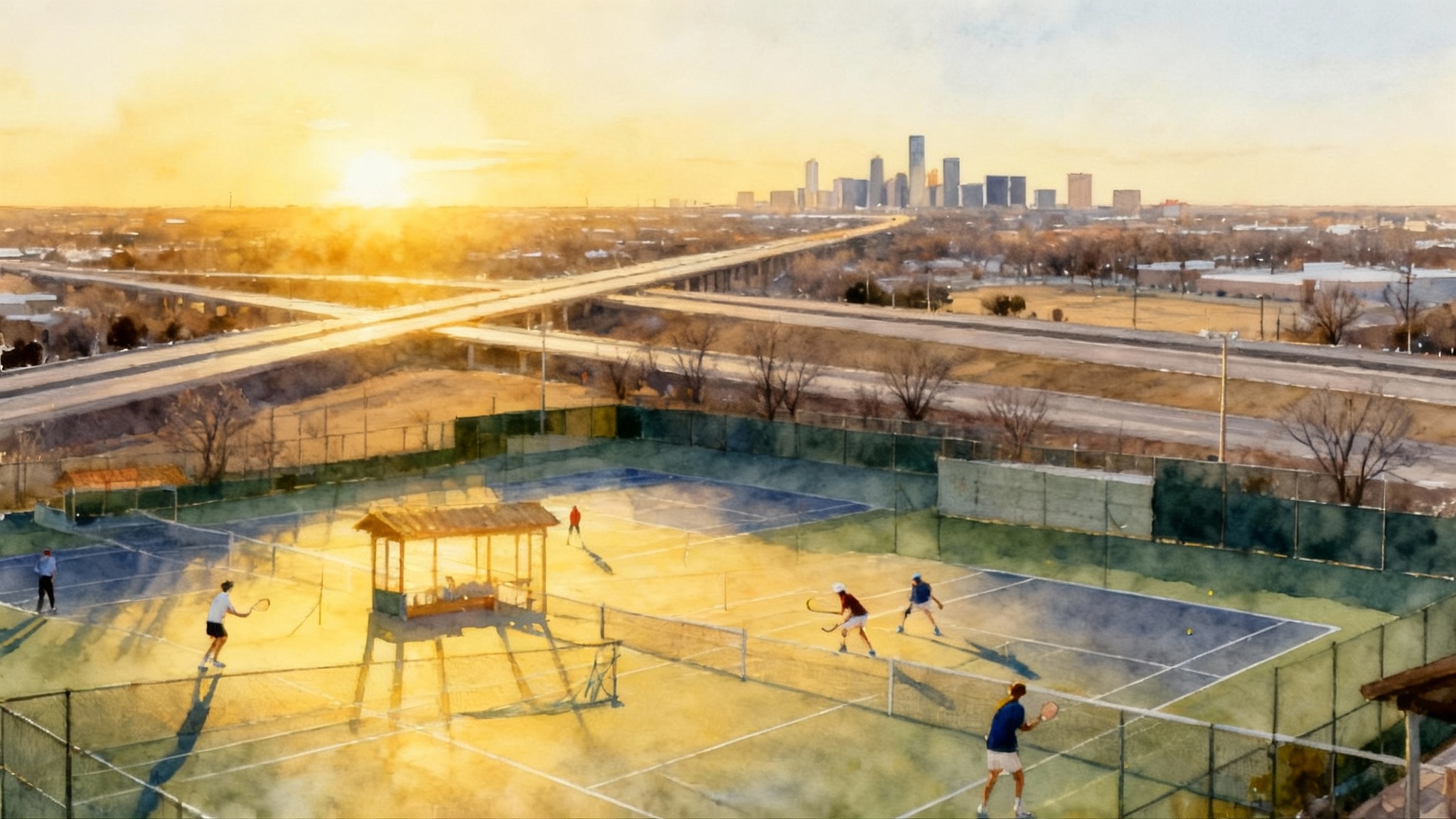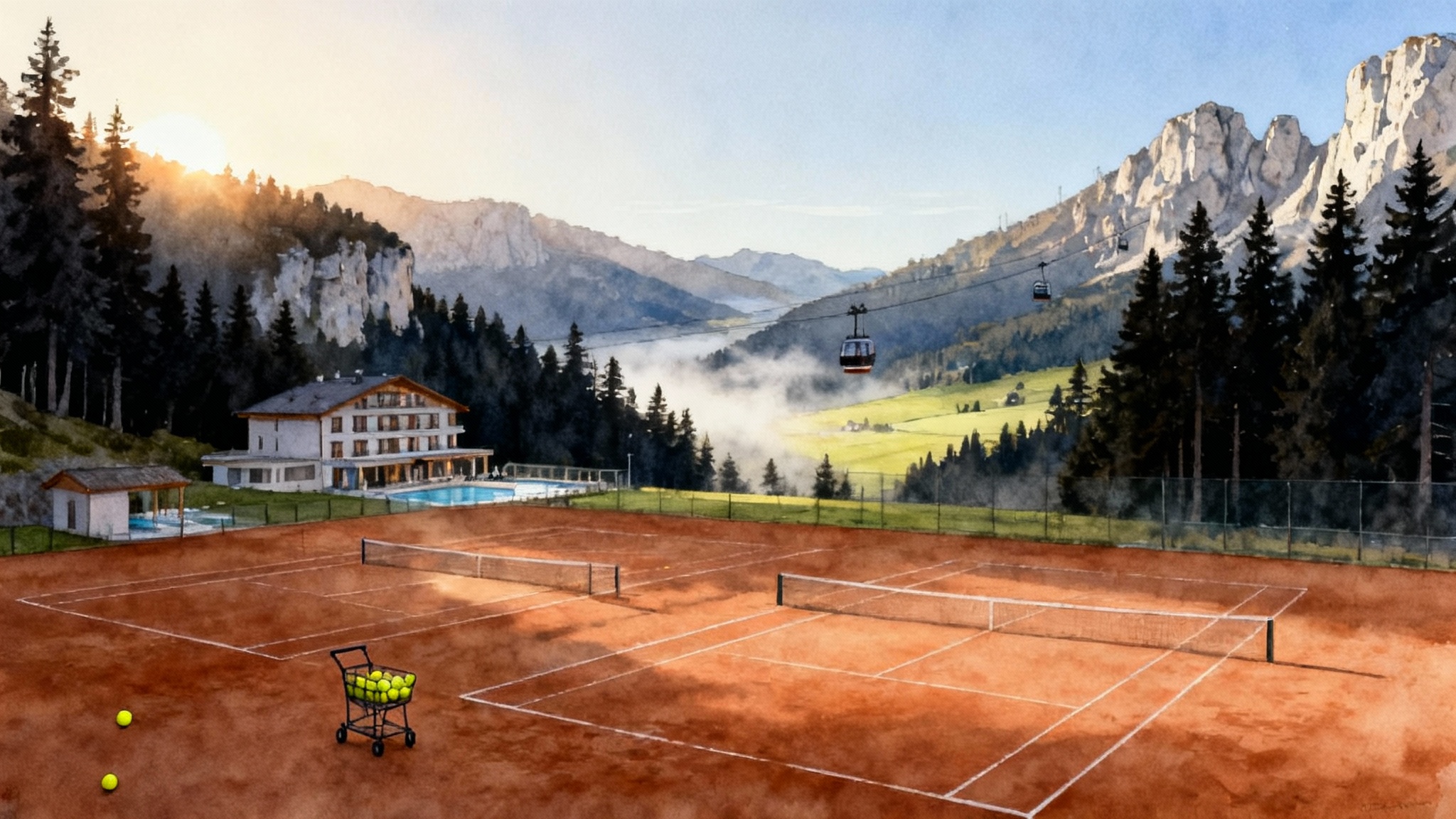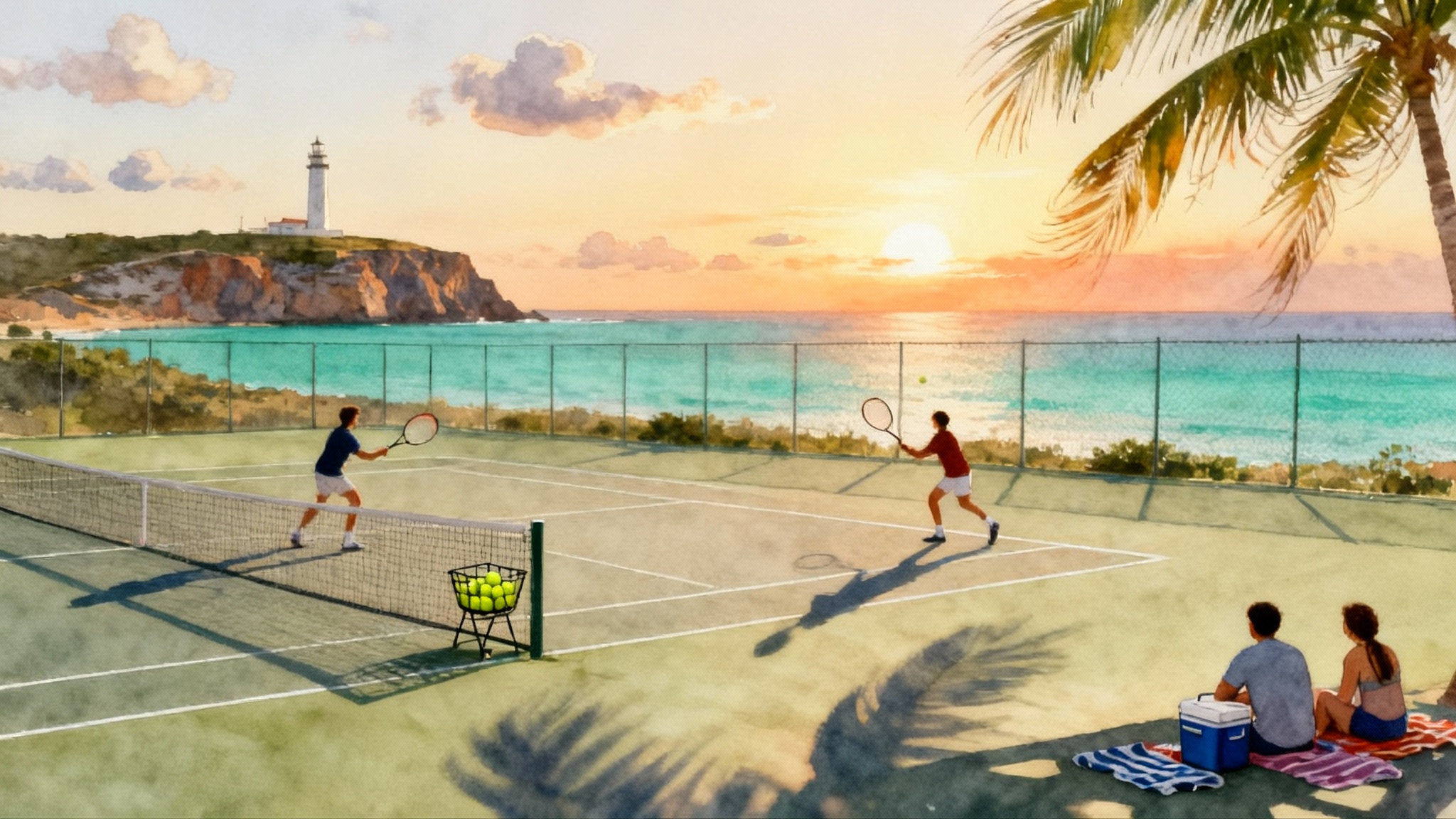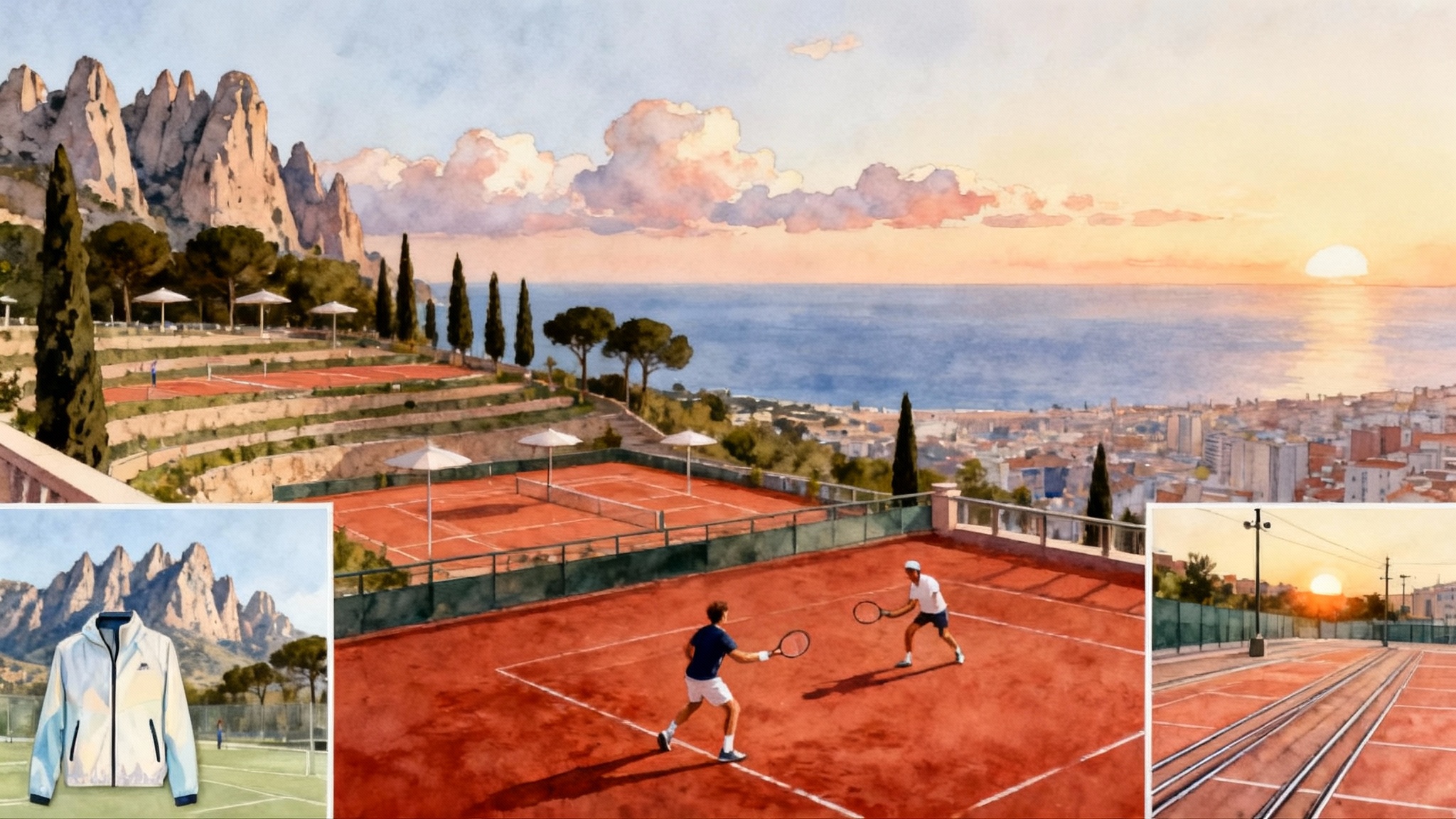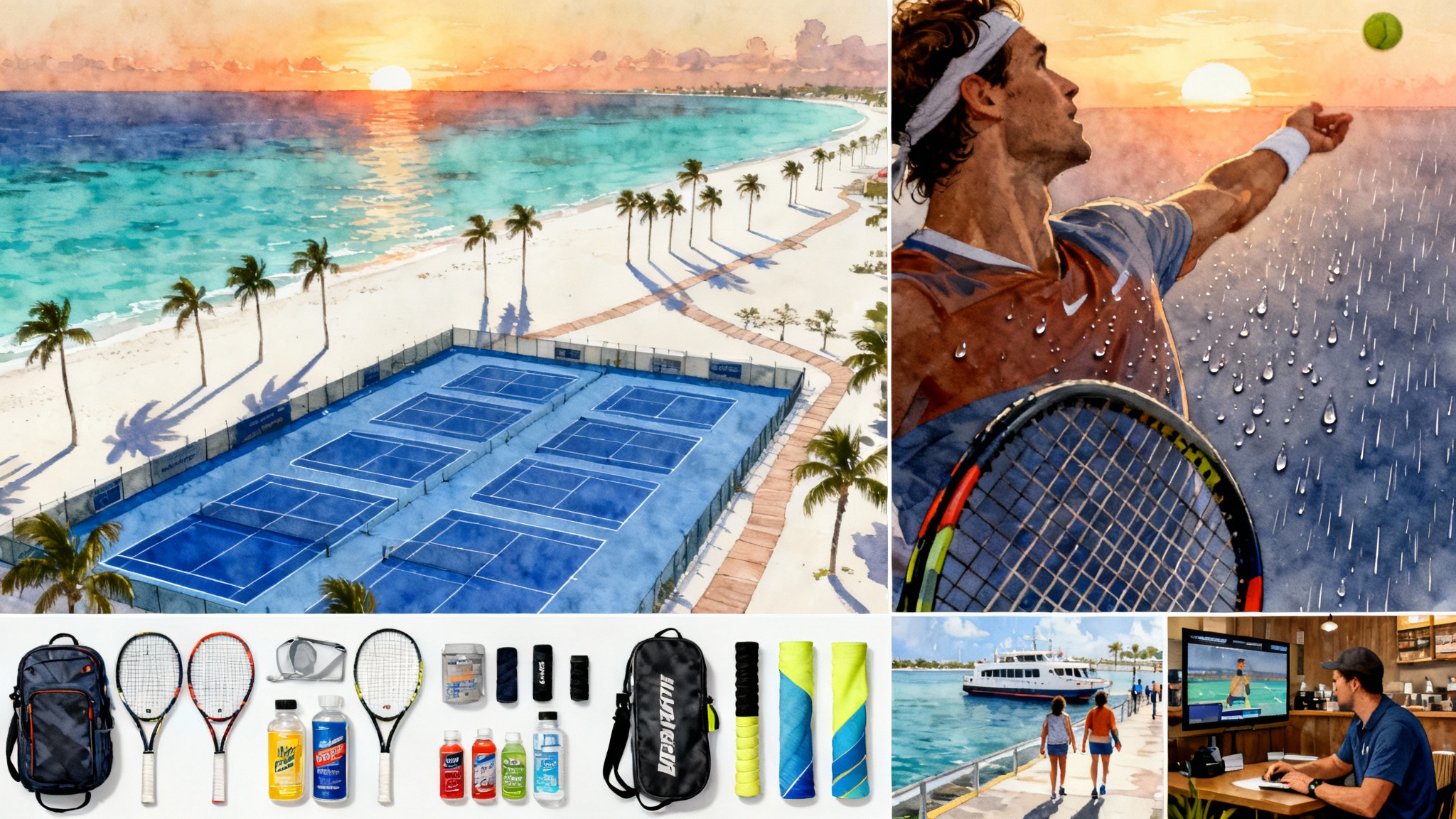Las Vegas Winter Tennis 2025–26: Dry‑Air Training Week
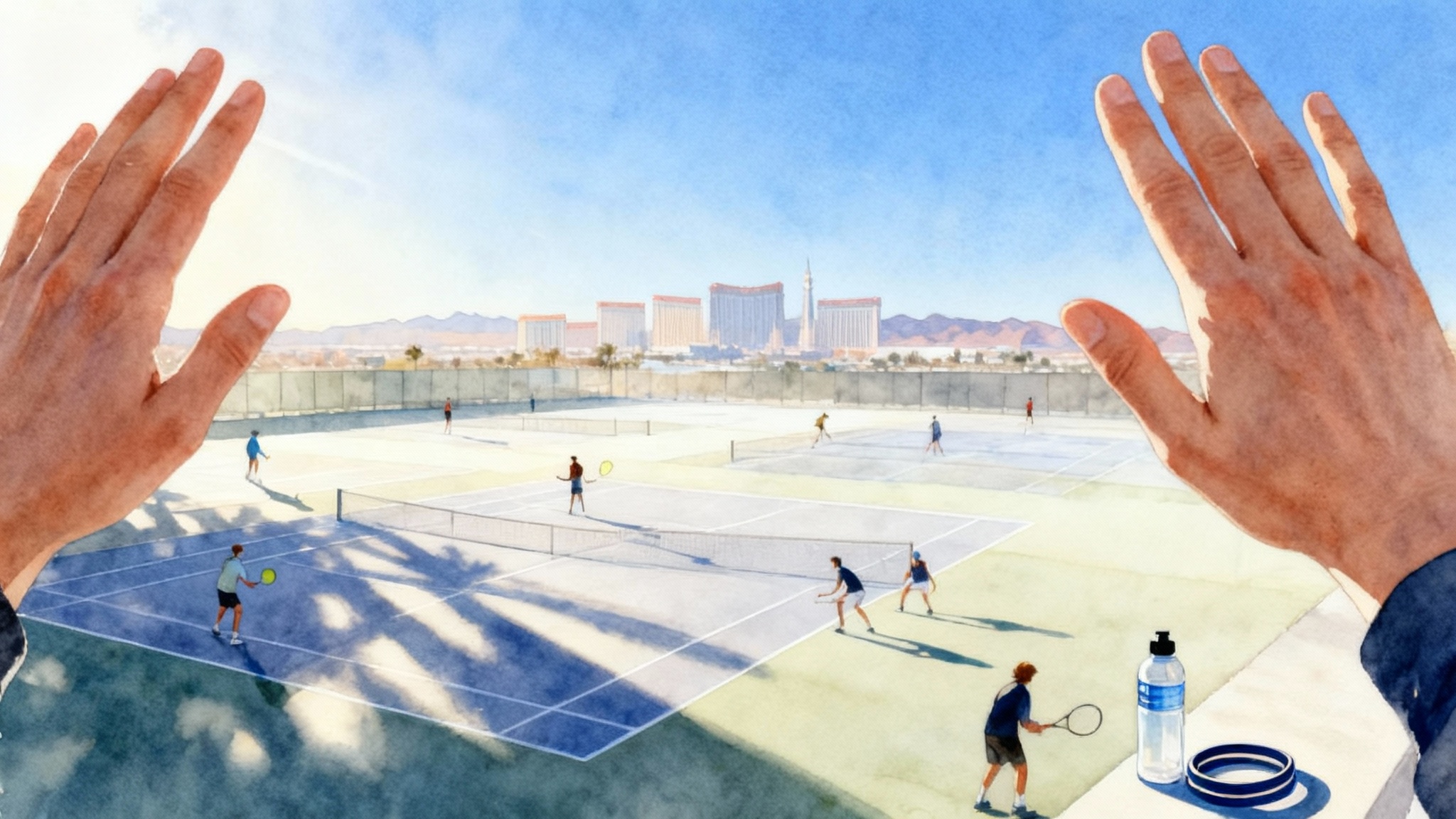
Why Las Vegas from November to March works
If you want dependable winter tennis in the United States without crossing an ocean, circle November 2025 through March 2026 and write Las Vegas next to it. The desert gives you a rare combination in winter: clear skies most days, fast drying courts after any shower, wide availability of public courts, and flights that arrive from almost everywhere at competitive prices. The dry air rewards clean mechanics and focused recovery, which makes a short training block especially productive.
Las Vegas sits in a basin with big daily temperature swings. Mornings can feel brisk, afternoons settle into crisp and playable conditions, and wind can arrive in gusts. That variability is not a downside. It is a feature you can train into. Learn to manage the ball in wind, learn to warm up your body when the air is cool, and you will leave sharper than you arrived.
Your anchor: No Quit Tennis Academy at Lorenzi Park
Build your week around structured high performance sessions at No Quit Tennis Academy in Lorenzi Park. Lorenzi Park is minutes from Downtown and a short drive from the central Strip, which means painless logistics and a realistic chance of getting from hotel to court in 15 to 20 minutes even at busy times. The academy runs disciplined drilling blocks, situational point play, and footwork circuits that translate well to match results. Book ahead, confirm the daily schedule you want, and let their staff place you in the right training group by level and goals.
How to use the academy:
- Commit to two or three academy sessions early in your stay to establish rhythm and intensity.
- Add one more academy block midweek to recheck movement patterns and build competitive reps.
- Ask for at least one session that ends with extended match play under light fatigue. You are training decision making in the desert, not only pretty strokes.
If you are comparing desert bases for winter blocks, see our Phoenix versus Tucson guide for program and climate contrasts.
The dry air week plan
A week in Las Vegas should feel like stacking bricks. Each brick is a clear session with a single purpose. Dry air accelerates dehydration and increases perceived effort, so precision beats volume. You will mix academy groups with targeted individual work, then plug in match play windows when your body is primed but not fried.
Principles for a productive block:
- One main quality session per day, one optional lighter session.
- Two strength or mobility sessions across the week, not back to back with your hardest on court day.
- One genuine recovery day that still keeps you moving.
- Hydration before you feel thirsty, plus electrolytes during and after.
- Film small slices, such as six ball live rallies or second serve games, rather than two full sets. Dry air exposes footwork shortcuts. Short video makes it obvious.
Sample daily schedules
Below is a template you can book and then adjust for your level. The time blocks reflect typical winter conditions in Las Vegas.
Seven day plan
Day 1, Arrival and light hit
- Morning or early afternoon: Fly into Harry Reid International Airport and check in.
- 3:30 to 4:30 p.m.: Easy 60 minute hit at Lorenzi Park, focus on rhythm and timing, finish with 50 serves.
- Evening: Early dinner, stretch, lights out by 10:00 p.m.
Day 2, Baseline foundations at the academy
- 9:00 to 11:30 a.m.: Academy session, heavy crosscourt patterns, approach and first volley discipline.
- Lunch and nap.
- 3:30 to 4:15 p.m.: Mobility circuit at hotel or park lawn, include calf raises, hip airplanes, thoracic rotations.
Day 3, Serve plus first ball
- 8:30 to 10:30 a.m.: Court block, serve plus one patterning, 25 point starts with a second serve.
- Noon: Strength A, 35 minutes, hinge and push focus, trap bar or kettlebell deadlifts, split squats, push ups, suitcase carries.
- 4:00 p.m.: Walk 30 to 45 minutes outdoors in the sun to reset.
Day 4, Academy plus match window
- 9:00 to 11:30 a.m.: Academy session with situational points and tiebreakers.
- 2:30 to 5:30 p.m.: Match play window, ideally a verified rating match.
- Evening: Contrast shower, light dinner, no late night.
Day 5, Recovery and precision
- 9:30 to 10:15 a.m.: Aerobic flush, easy bike or jog, nasal breathing, low heart rate.
- 11:00 to 11:45 a.m.: Technique constraint drills, such as crosscourt forehand with a target cone and three ball progression.
- Afternoon: Optional sightseeing, feet up by 8:30 p.m.
Day 6, Pressure day
- 9:00 to 11:00 a.m.: Court block, return games to seven, third ball targets, penalty for short returns.
- Noon: Strength B, 30 minutes, pull and knee dominant, rows, rear foot elevated split squats, band pull aparts, pallof presses.
- 3:30 p.m.: Serve accuracy ladder, ten minutes.
Day 7, Academy and close with competitive play
- 9:00 to 11:30 a.m.: Academy session to peak intensity.
- 2:30 to 4:30 p.m.: Second match window or two set challenge match.
- Pack and prepare to travel the next morning.
Three day sprint
- Day 1: Afternoon arrival hit and 45 minute serve block.
- Day 2: Morning academy, afternoon match window.
- Day 3: Morning precision drills, lunchtime recovery walk, depart.
Ten day extension
Add three days between Day 5 and Day 6:
- Extra recovery day with light mobility and a 30 minute spin.
- One additional match day with a verified rating.
- One technical day with a private lesson at the academy to tune any drift that shows up under match stress.
Wind and temperature swing strategies
Desert wind and morning chill can either rattle you or make you better. Choose the second outcome.
- Adjust strings and balls: If mornings are near 40 to 50 degrees Fahrenheit, string one racquet two pounds looser than your usual. Cold balls are slower and bounce lower. Warmer afternoons call for your regular tension. Bring an extra can of balls for afternoon sessions when the first can goes lively.
- Work the serve toss: Into a headwind, toss slightly more forward and drive through the court. With a tailwind, take a touch off the first serve, use more spin, and aim for bigger margins. In crosswinds, start toss a fraction into the wind so the ball falls into your preferred contact point.
- Change targets by wind: Into a headwind, aim deeper and use heavy spin. With a tailwind, aim shorter and shape the ball crosscourt to lengthen the court. In crosswinds, choose crosscourt to let the wind push the ball back toward the line, or use a firm line drive downwind only when you have position.
- Footwork rules: Take smaller adjustment steps, keep your base wider on contact, and recover one step earlier than you think. Wind turns average spacing into late spacing. Over prepare and you regain time.
- Layer smart: Start in a long sleeve, thin vest, and a beanie for the first ten minutes. Shed layers as you raise your temperature. Dry air hides sweat, so do not confuse cool skin with low effort.
- Sunscreen and lip balm: Winter sun at altitude and low humidity can fool you. Apply in the room, not at the fence.
Recovery and cross training in the desert
You win winter training with recovery, not with extra buckets of balls.
- Hydrate on a schedule: Drink 500 milliliters on waking, another 500 milliliters in the 90 minutes before the main session, and at least 500 milliliters during longer sessions. Add electrolytes once per day, twice if your sweat rate is high.
- Post session routine: Ten minutes of easy skipping or walking, followed by calf and hip mobility, then a protein forward meal within an hour. Soups and rice bowls work well in dry air because they pair fluids with salt and carbohydrates.
- Sleep tactics in hotel rooms: Set the thermostat between 66 and 69 degrees Fahrenheit, place a damp towel on a hanger to add a hint of humidity, and avoid heavy meals after 8:00 p.m.
- Cross training that travels well: A mini band, a jump rope, and a lightweight massage ball cover everything. Use them for activation before you head to Lorenzi Park and for down regulation in the evening.
- Optional excursions that keep you moving: Walk the scenic loops in the west valley, climb gentle stairs at public venues, or take a slow morning at a hotel pool for a 20 minute water walk. Keep intensity low on your designated recovery day.
Courts, logistics, and where to stay
Public courts are plentiful across the valley, and many parks have lights. Mornings are the easiest time to find an open court, especially on weekdays. Bring your own water and a small towel for grips since the air is dry and absorbent.
Where to stay near Lorenzi Park:
- Palace Station: Off Strip, easy access to Lorenzi Park, quiet rooms for athletes.
- Sahara Las Vegas: North Strip location, straightforward drive to the park, monorail access if your group wants a car light trip.
- Downtown options such as the Golden Nugget: Good for groups that want walkable food and a short hop to morning sessions.
Commuting and flights:
- Harry Reid International Airport sits close to the Strip and Downtown. Plan 25 to 35 minutes from baggage claim to hotel most hours, about 15 to 20 minutes from central hotels to Lorenzi Park.
- Nonstop flights typically arrive from Los Angeles, San Diego, San Francisco, Seattle, Denver, Dallas, Chicago, and many East Coast cities. Pick mid day arrivals to reduce the chance of weather delays at your home airport.
If a central United States option suits your schedule, consider the DFW reliable outdoor base for similar November to March planning.
How to slot in match play for juniors, adults, and college prep players
Match play is the spine of your week. Use a verified rating where possible.
Terms to know:
- Universal Tennis rating system allows verified matches through events and flex play.
- USTA leagues and tournaments provide sanctioned competition by level and age.
How to schedule matches inside the week:
- The first match window should land on Day 4, after you have banked two or three training blocks. Your legs are prepared, your timing is set, and you can test patterns under stress.
- The second window fits on Day 7 or Day 8 if you extended your stay. Insert a lighter day before it and a partial recovery day after it.
Choosing formats:
- Juniors and college prep: Round robins or compass draws with three shorter matches build resilience without burning a whole day. Bring a tripod to film serve plus first ball on both sides, and take three notes only: where the return lands, where the plus one lands, and the outcome.
- Adults: A best of three sets format or a two sets with match tiebreak format works. If you play USTA leagues at home, consider one UTR event or a local verified match to diversify rating data.
Standards for match density:
- Two matches across a seven day block is enough for most players.
- If you push to three, keep two of them shorter formats.
Warm up and cool down templates:
- Ten minutes dynamic, five minutes shadow swings, five minutes serves.
- Post match, five minutes walking, three stretches you repeat every time: calves, hip flexors, and thoracic rotations. Then refuel.
Coaching notes for different player profiles
Juniors and families:
- Book academy groups in the morning, then use afternoons for homework and a second short court block.
- Choose a hotel with a quiet lobby or cafe area so school work fits without friction.
- Keep at least one evening free of screens to protect sleep.
College prep and collegiate athletes:
- Train with academy hitters who can replicate match tempo. Ask for serve plus first ball drills and second serve break points.
- Lift twice, not three times. The win is specific conditioning under the sun and wind, not weight room personal records.
- If you can bring a teammate, schedule one practice set in full match kit, including changeover routines.
Adult competitors and teams:
- Align two to four players on the same schedule so you can mix singles and doubles.
- Practice doubles return plays in wind: Australian formation into headwinds, I formation with tailwinds to protect lob returns.
- Plan one night for a team dinner that is earlier than you think and higher in carbohydrates and salt than you might choose at home.
Packing and prep checklist
- Two racquets, one strung two pounds looser for cold mornings.
- Overgrips, vibration dampeners, and a small towel for your bag.
- Electrolyte packets and a one liter bottle you actually like to carry.
- Sunscreen, lip balm, sunglasses, and a hat with a dark underside brim.
- Layering kit: long sleeve, thin vest, beanie for warm ups.
- Mini band, jump rope, massage ball.
- Tripod or fence clip for phone video.
- Running shoes for walks and recovery days.
Putting it all together
Las Vegas from November 2025 through March 2026 gives you a training environment that is more reliable than most winter options in the country. Anchor your plan with No Quit Tennis Academy at Lorenzi Park so your key sessions have structure and pace. Stack the rest of your days with clear bricks: targeted individual work, wind smart adjustments, two strength or mobility touch points, and verified match play. If you want a humidity based winter option, compare notes with our Lake Nona training week. The desert rewards intention. Arrive with a simple plan, respect the dry air, and you will leave with patterns that hold up anywhere you play next.
